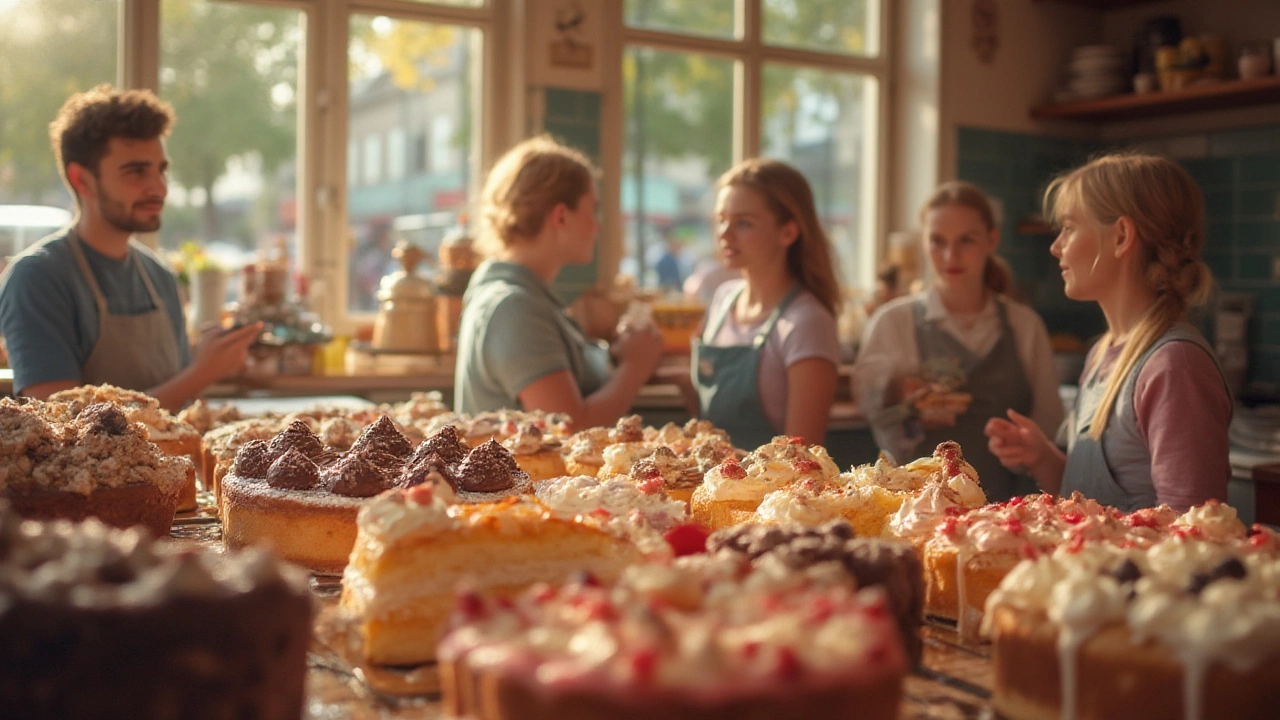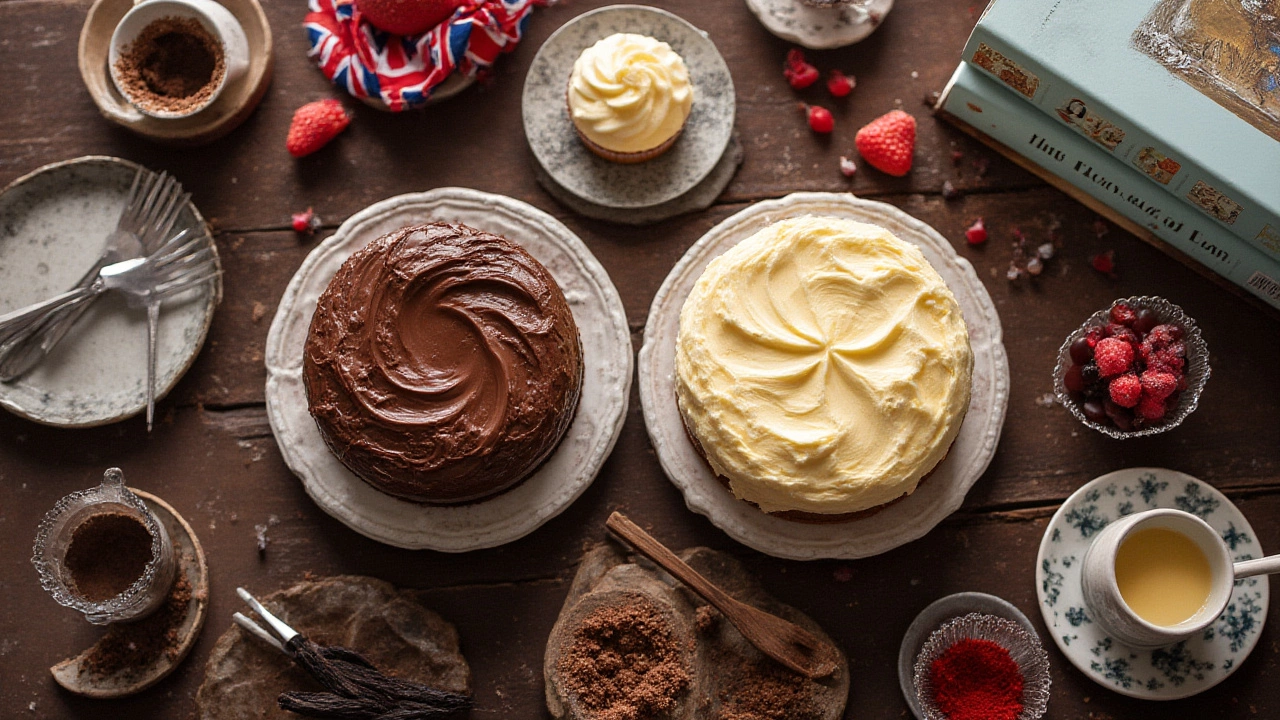
Chocolate, vanilla, red velvet, lemon—everyone swears they know which cake steals the show. But popularity isn’t always about tradition or what Mum always made. Imagine birthdays without a universal crowd-pleaser, or weddings skipping on the showstopping centrepiece. Turns out, the cakes people love most tell you a lot about changing tastes, local quirks, and why nostalgia often wins over novelty. Ready to settle the debate? The world has spoken—and you might be surprised by what cakes get voted most eat-me-now.
The Undeniable Charm of Chocolate Cake
Walk into any bakery, from tiny corners in Bristol to bustling cafés in New York, and the odds point straight at chocolate cake as a bestseller. This isn’t just local hearsay—surveys by big names like TasteAtlas and the BBC Good Food poll repeatedly crown chocolate cake as the world’s favourite. Why? It’s rich, it’s comforting, it works for birthdays, dinner parties, or a solo Friday night treat. There’s something about the kick of cocoa that taps straight into our childhood brains. Even scientific studies, like the famous University of Reading paper, found that chocolate triggers dopamine release—the pleasure chemical. No wonder we keep coming back for another slice.
In 2024, Google’s annual Year in Search report found that “chocolate cake recipe” was the most looked-up cake on the platform, outperforming vanilla and even trendy red velvet. Chocolate cake’s popularity gets a power-up from its hundreds of variations: moist layers, fudge frosting, flourless, German, devil’s food, or layered with fruits and ganache. It fits gluten-free, vegan, and classic diets alike. That adaptability makes it democratic—a cake for everyone, no matter your dietary needs. If you’re stuck deciding what to bake for a mixed crowd, chocolate is the safest bet. By the way, always use good quality cocoa powder; taste testers consistently prefer cakes made with Dutch process cocoa over natural for more intense flavour.
Chocolate cake also pops up whenever comfort is needed. After heartbreaks, during rainy afternoons, or just because—somehow, chocolate cake helps. Psychologists argue it’s about nostalgia too, which brands use on purpose. Ever noticed adverts often show chocolate cake in warm, homey kitchens? Yep, that’s a calculated move. So, if you’re after a people-pleaser dessert, start with a reliable chocolate cake recipe, and don’t skimp on the cocoa. A little tip: add a pinch of coffee powder to magnify the chocolate flavour. It won’t taste like coffee—just richer.
The Classy Simplicity of Vanilla Cake
If chocolate is dramatic, vanilla cake is the cool, calm cousin—it almost never disappoints. It shows up everywhere: at formal weddings, understated birthdays, celebratory office parties. The beauty of vanilla cake is its versatility: it can be the main act, the understated base for layered desserts, or the canvas for any wild frosting colour you can imagine. There’s a reason why top bakers like Mary Berry and Martha Stewart say learning to bake vanilla sponge is a must—get this right, and everything else gets easier.
Data from supermarket sales in the UK and Europe regularly puts vanilla cake and its cousin, the Victoria sponge, in the top three. A 2023 poll by The Grocer magazine revealed that more than 67% of households bought a plain vanilla or sponge cake more than once a month—more than any other type. Why? It’s plain enough for picky eaters, but still leaves room for creative upgrades. Fresh berries, zingy lemon curd, or even a classic buttercream—vanilla is the ultimate blank slate.
But don’t mistake plainness for boring. Bakers know that real vanilla extract (not synthetic essence) can be magical. Quality vanilla delivers mellow, fragrant notes that sit in the background but make the whole cake sing. For an upgrade, try infusing your milk with a split vanilla pod before mixing—some bakers swear this technique is the secret to cake shop-style results at home. There’s even an odd but effective tip: a dash of salt balances the sweetness and helps vanilla shine through more clearly. Vanilla cakes are also the easiest to shape, stack, and decorate, making them the go-to for elaborate celebration cakes. So next time you need a safe crowd-pleaser, don’t underestimate classic vanilla.

Regional Favourites: Why Some Cakes Rule Local Tables
Every region has a cake it calls its own, and that local pride runs deep. In the UK, nothing dethrones the Victoria sponge, crowned with strawberry jam and whipped cream. Wander through the South of the US, and you’ll find red velvet and hummingbird cake at every major gathering—each with recipes passed down like precious heirlooms. Across the Channel, the French have their fraisiers and gateaux, luxuriously layered with fruit and pastry cream.
How does this happen? Food historians say it’s partly down to what ingredients are cheap and easy to get. For example, carrot cake saw booming popularity in Britain during the WW2 rationing era, when carrots were used to replace sugar. Now, it’s a café staple. In Japan, matcha (green tea) cakes get the spotlight—thanks to both tradition and a massive local passion for all things matcha. Italy’s torta della nonna, loaded with pine nuts and custard, is pure culinary nostalgia.
The American “sheet cake” is another phenomenon: easy to bake in big batches, perfect for potlucks, and actually outselling round fancy cakes in supermarkets, according to the Food Industry Association's 2022 sales report. Meanwhile, Germans swear by Black Forest gâteau (Schwarzwälder Kirschtorte), especially in regions where cherries grow in abundance. Ever heard of tres leches cake? It rules birthdays in Mexico and many Latin American countries. The cultural connection to cake shapes, ingredients, and traditional events means your favourite might not even register on the global charts, but it dominates closer to home. Fun fact: in Sweden, prinsesstårta (princess cake) even gets a whole week dedicated to it every September—talk about devotion.
Modern Twists: Vegan, Gluten-Free, and Instagrammable Cakes
Baking trends move quickly, but dietary choices and social sharing are rewriting the rules of “most popular” faster than ever. In the last five years, Google Trends shows a massive spike for searches like “vegan chocolate cake” or “gluten-free birthday cake.” These aren’t just fleeting diet fads. According to the British Baker’s 2024 industry report, nearly 20% of cakes sold in UK supermarkets now tout vegan or gluten-free credentials. If you think going free-from means sacrificing taste, think again. Supermarkets have upped their game—more people say they’d buy a vegan cake “even if they’re not vegan,” thanks to how moist and rich modern recipes have become.
Instagram and TikTok also reshape what cakes we chase. Smash cakes for babies, rainbow layers, mirror glaze, and surprise-inside cakes all see their fifteen minutes of fame, but none topple chocolate or vanilla from the top. However, TikTok’s viral “Burnt Basque Cheesecake” and Korean-style floral cakes have sent global cake sales surging in the last two years, especially among Gen Z and Millennials who crave share-worthy desserts. The real secret? People love novelty, but only if the cake tastes good enough to come back for seconds. No amount of pretty decoration makes up for dry sponge or flat flavours.
One more thing—gluten-free baking doesn’t have to be intimidating. Potato starch or finely milled rice flour keep cakes tender, and a squeeze of orange juice freshens up any free-from sponge. If you’re baking vegan, flaxseed or chia “eggs” bind cakes perfectly. Want an extra lift? Apple cider vinegar with baking soda gets you there, minus any weird aftertaste. These tiny tweaks make cakes more inclusive without losing their crave-worthy texture. You’ll notice popular bakeries always offer at least one vegan and gluten-free showstopper on their menus these days.

What Do the Numbers Say? The Worldwide Cake Leaderboard
It’s easy to guess what your mates might love, but global stats put things in perspective. To settle it, here are some cold, hard facts. Below is a handy table, based on 2024 data from TasteAtlas, Google Search trends, and major supermarket sales in the US and UK. It shows which cakes come out on top—regionally and worldwide.
| Rank | Cake Name | Main Ingredient | Region of Popularity |
|---|---|---|---|
| 1 | Chocolate Cake | Cocoa | Worldwide |
| 2 | Vanilla Sponge / Victoria Sponge | Vanilla | UK, Europe |
| 3 | Red Velvet | Cocoa, Buttermilk | US, Global |
| 4 | Carrot Cake | Carrot | UK, US |
| 5 | Cheesecake | Cream Cheese | US, Europe |
| 6 | Black Forest Gâteau | Chocolate, Cherries | Germany, Global |
| 7 | Tres Leches Cake | Milk, Cream | Latin America |
| 8 | Matcha Cake | Green Tea | Japan |
| 9 | Prinsesstårta | Marzipan | Sweden |
| 10 | Birthday Sheet Cake | Varies | US |
What jumps out? Chocolate cake keeps its iron grip, but vanilla sponge and regional heroes make strong showings too. Red velvet remains an American darling, but its striking appearance is catching on everywhere. Cheesecake doesn’t always shout “party cake,” yet its creamy texture and endless variations earn it heaps of fans. Cake popularity is partly about taste, partly about occasion, and—let’s be honest—a lot about memories.
So the next time you bake, or stroll past a cake display, remember: the “most popular cake” might be chocolate for most, but your favourite could be a cult classic. That’s the joy of cake—it’s as diverse as our tastes, histories, and the little joys we celebrate every day.